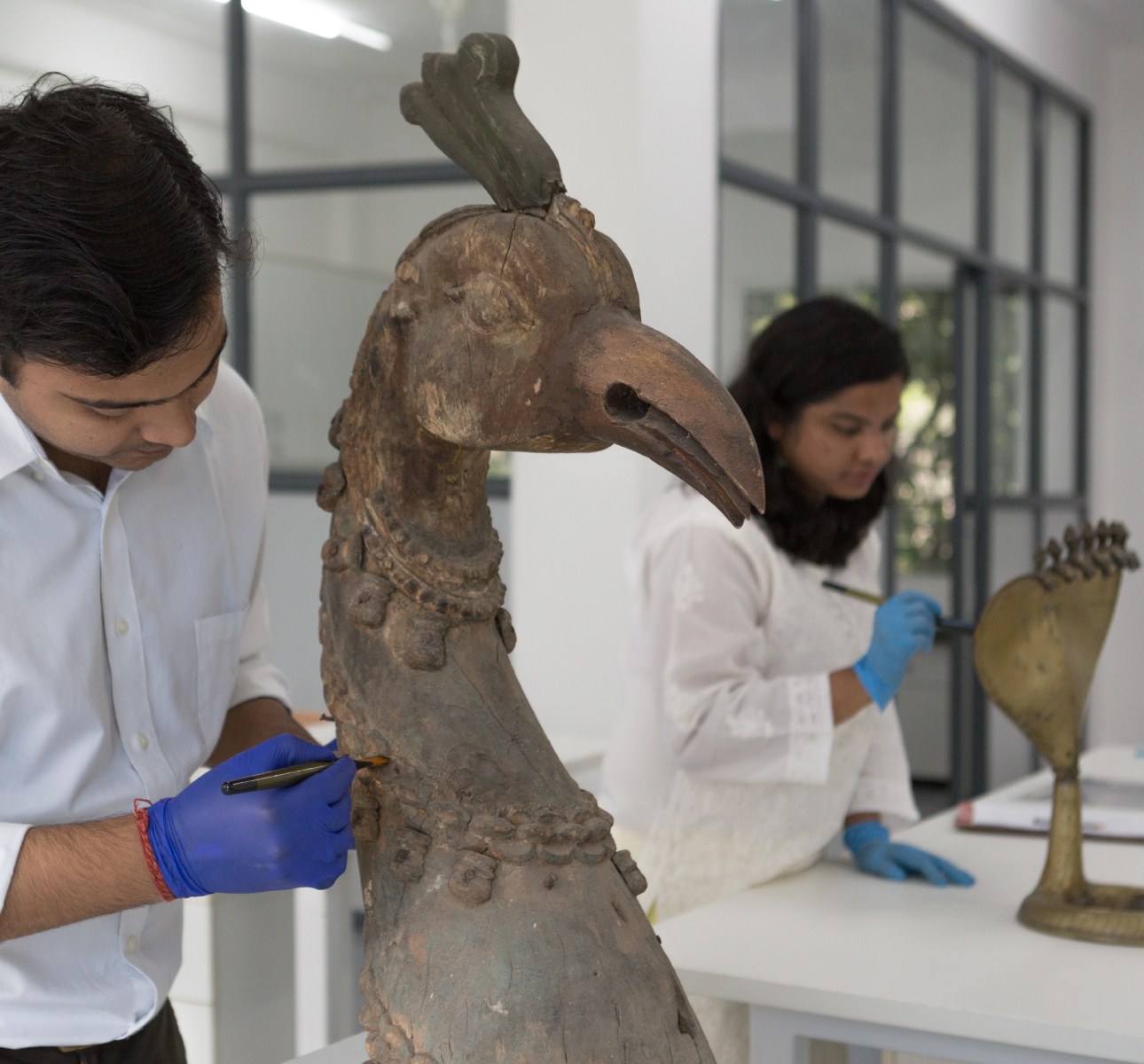Conservation
Conserving our culture is at the centre of our mission, given the increasing loss of heritage in the country.
A state-of-the-art conservation lab, set up with the support of Tata Trusts in 2019, occupies a significant place in our museum’s five-storey building. Through our restoration facilities, we hope to not only conserve and protect our collection, but also provide an avenue for the development of skills and expertise to flourish in the field of restoration in India.
Preserving India’s Heritage
Over the centuries South India’s climate, among other factors, has adversely affected several artworks from our collection. Home to a growing collection of 60,000 artworks, MAP acknowledges its responsibility to serve as a guardian of India’s diverse heritage. MAP’s Conservation Lab is currently run by three specialists who not only conserve the collection but also establish a preventative programme to maintain the collections for future generations.
The conservation specialists at MAP regularly participate in international training programmes and remain updated with the latest cutting-edge developments and techniques in the field. We hope to create one of India’s largest conservation labs that could participate and collaborate with other institutions in the country in actively preserving our rich cultural heritage.



